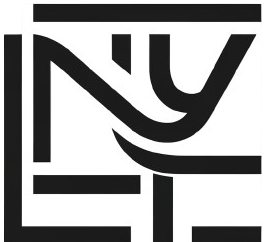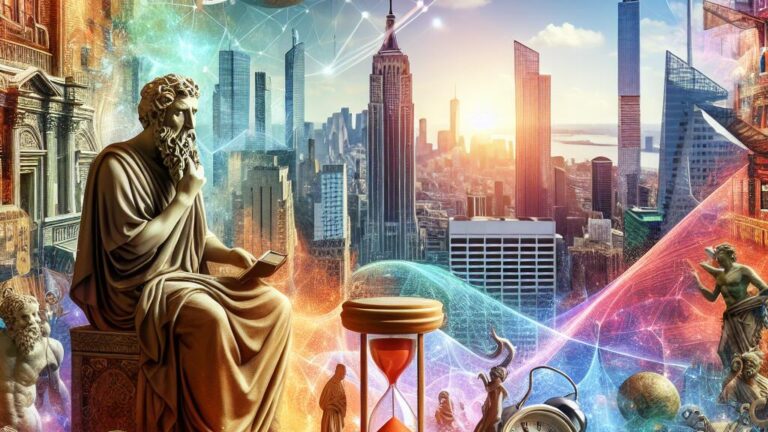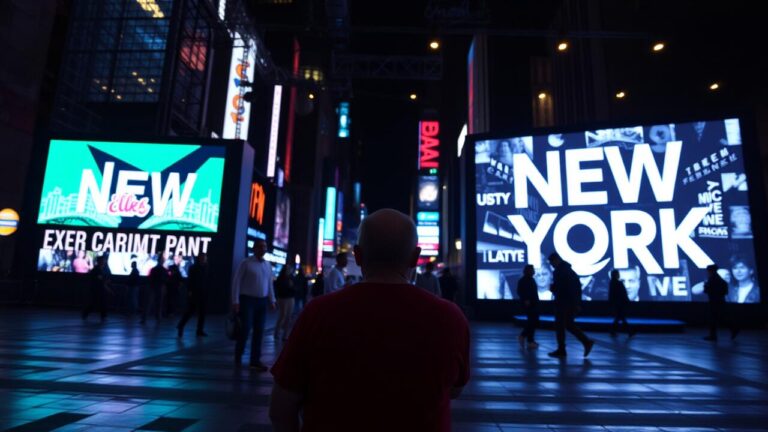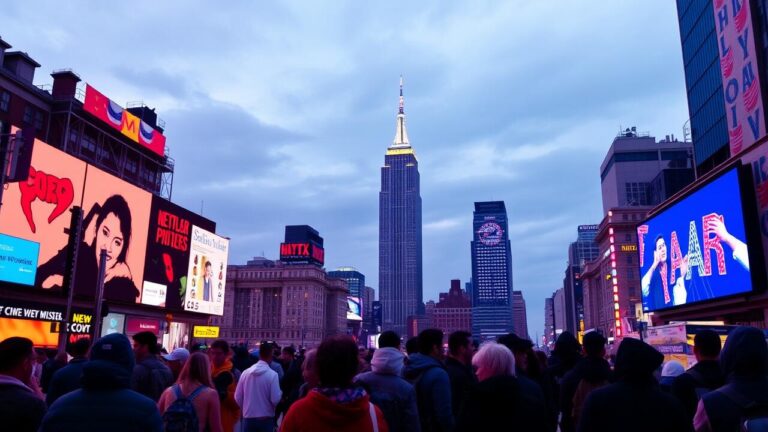Beyond the Canvas: Digital Art as a Form of Cultural Expression
Table Of Contents
Beyond The Canvas: Digital Art As A Form Of Cultural Expression | Beyond the Canvas: Exploring Digital Art as a Vital Form of Cultural Expression
Key Takeaways
- Digital artistry transcends traditional mediums, serving as a vital method of cultural representation and comprehension.
- The importance of digital creativity lies in its ability to reflect societal values and foster connections among communities.
- Various instruments and methods are essential for creating digital artwork, enhancing the creative process and output.
- Online spaces and networks play a crucial role in the dissemination and appreciation of digital art forms.
- Digital creativity influences societal perspectives and trends, reshaping cultural narratives and dialogues.
- A plethora of unique perspectives enriches the digital art world, celebrating diversity and inclusivity in creative expression.
Beyond The Canvas: Digital Art As A Form Of Cultural Expression | Understanding Digital Art
Digital art has emerged as a powerful and innovative medium that transcends traditional boundaries. Beyond the Canvas: Digital Art as a Form of Cultural Expression incorporates diverse techniques and platforms, enabling artists to create digital paintings and artworks that reflect contemporary issues and personal narratives. This form of art allows digital artists to explore ideas that may not be feasible on physical canvases, leading to unique digital artworks that challenge conventional definitions of art. As digital painting continues to gain popularity, it fosters a rich dialogue between viewers and creators, emphasizing how digital art serves as a significant cultural expression in our modern society.
| Digital Art Technique | Description | Notable Artists |
|---|---|---|
| Digital Painting | Creating artworks using digital tools that simulate traditional painting techniques. | Kai Carpenter, Evgeny Lushpin |
| 3D Modeling | Crafting three-dimensional objects and environments using software for both art and animation. | Blender Artists, Nuri Durr |
| Animation | Using digital technology to create moving images, either for artistic expression or storytelling. | Hayao Miyazaki (Studio Ghibli), Simon Stålenhag |
| Digital Collage | Combining various digital materials to create a cohesive artwork that tells a new story. | David Hockney, Anna Uddenberg |
| Interactive Art | Artworks that require viewer interaction to complete or alter the experience, often using technology. | Rafael Lozano-Hemmer, TeamLab |
Beyond the Canvas: Digital Art as a Form of Cultural Expression | Definition and Characteristics
Digital art transcends traditional boundaries, representing a significant evolution in the realm of artistic expression. Works of art created by digital artists often challenge conventional concepts of what constitutes art. This medium encompasses a broad spectrum of styles, including figurative art and ai-generated art, which collectively showcase unique forms of visualization that resonate with contemporary culture. As a modern art genre, digital art serves as a canvas for artistic freedom, allowing creators to explore ideas and themes in innovative ways.
Culturally, digital art acts as a mirror reflecting societal values and concerns, evolving alongside technology and social dynamics. The characteristics of this art form include its accessibility and versatility, enabling artists to produce stunning artworks that can be easily shared and disseminated across various platforms. The digital medium not only enhances visual art’s reach but also encourages collaboration among creators worldwide. Beyond the Canvas: Digital Art as a Form of Cultural Expression embraces this diversity, presenting a dynamic landscape for both emerging and established artists.
Evolution of Digital Art Forms
The journey of digital art has transformed significantly, expanding beyond the traditional boundaries of artistic expressions. Artists from various cultural backgrounds have embraced technology to redefine fine art photography and the visual arts. This evolution has given rise to new art movements, such as digital pop art and contemporary adaptations of art deco, which reflect today’s cultural landscape. Art galleries are now showcasing digital works, allowing artists to push the limits of creativity and innovation in ways previously unimaginable.
Technology has not only influenced the style and medium of art but has also democratized the creative process for contemporary artists. By utilizing software and digital tools, creators can blend traditional techniques with contemporary digital methods. This fusion has sparked a new wave of artistic exploration that celebrates diverse narratives. Beyond the Canvas: Digital Art as a Form of Cultural Expression is now a vital platform for showcasing these innovative works, fostering a deeper appreciation for the broad spectrum of artistic voices in this digital age.
Cultural Significance of Digital Art
Digital art transcends traditional boundaries, allowing contemporary artists to explore themes that reflect societal values and cultural heritage. Aesthetically appealing, this medium serves as a canvas for various forms such as painting, portraiture, street art, and performance art, pushing the limits of creativity. Digital content becomes a powerful tool for artists to engage audiences and challenge perceptions within the arts. Beyond the Canvas: Digital Art as a Form of Cultural Expression highlights the innovative ways artists communicate their messages, ultimately enriching the cultural landscape and inspiring future generations.
Reflecting Contemporary Issues
Digital art serves as a powerful medium for reflecting contemporary social and cultural issues. Artists utilize generative art techniques to create intricate pieces that blend elements of classical art and modern technology. These digital canvases often act as a tapestry of thoughts and emotions, addressing themes such as identity, inequality, and environmental challenges. As these works gain recognition in the art market, they push the boundaries of what constitutes art, encouraging viewers to engage with pressing societal matters.
The rise of photography and digital manipulation has transformed the way artists view and interpret culture. Beyond the canvas lies an expansive realm where traditional forms of expression meet innovative practices, enabling creators to comment on real-world challenges. This new landscape not only fosters a sense of community among artists and audiences but also invites discourse on the ever-evolving relationship between art and society. The ability to share these digital works instantly expands their reach, making the dialogue around culture and contemporary issues more impactful than ever.
Bridging Traditional and Modern Art
The intersection of traditional and modern art is a vibrant dialogue within the art world, showcasing how digital mediums enrich existing forms. Artists now utilize virtual canvases to create innovative artworks that pay homage to classical techniques while pushing the boundaries of the art form. This blending is evident as creators experiment with texture, color, and composition in ways that challenge the conventional definitions of a canvas. Beyond the Canvas: Digital Art as a Form of Cultural Expression highlights how artists navigate both realms, allowing their pieces to speak to contemporary audiences.
Emerging from the digital art movement, many artists find inspiration in traditional motifs, transforming them into new creations that resonate in today’s art scene. By employing a digital artwork service, they can replicate the essence of traditional art while introducing modern elements, thereby expanding the dialogue between past and future. This synergy not only enhances the visual impact of their pieces but also reinforces the value of both traditional art and modern innovations. As these diverse expressions flourish, the lines between the two continue to blur, creating a rich tapestry of cultural expression.
Tools and Techniques in Digital Art
The realm of digital art encompasses a variety of tools and techniques that redefine artistic expression, fundamentally altering how artworks are created and appreciated. This evolution allows artists to explore new art forms, such as digital painting, which transforms the artist’s intent into a living canvas of vibrant colors and intricate details. In today’s contemporary art landscape, these techniques facilitate diverse modern art pursuits, from personal art endeavors to large-scale public art installations. Artists leverage powerful software and applications, enabling sophisticated art creation that resonates with audiences while addressing cultural themes. Through these practices, Beyond the Canvas: Digital Art as a Form of Cultural Expression challenges traditional boundaries, creating opportunities for innovative artworks that reflect both individual and collective narratives.
Software and Applications
The emergence of various software and applications has transformed the landscape of digital art, allowing artists to express their artistic narratives and create precious artworks in ways that were previously unimaginable. As digital artist David exemplifies, these tools empower creators to blend traditional art forms with cutting-edge technologies, resulting in a legitimate art form that resonates with diverse audiences. Artists can now leverage generative artwork techniques, enhancing their artistic practices by experimenting with different artistic mediums and producing unique art pieces that reflect contemporary themes and art insights.
Software like Adobe Photoshop, Procreate, and various generative art applications provide an expansive platform for artistic creation. These tools not only support the visualization of concepts but also facilitate collaboration within digital art communities. By transcending traditional boundaries, artists engage in dynamic processes that embody their experiences and cultural heritage. This evolution reaffirms the significance of Beyond the Canvas: Digital Art as a Form of Cultural Expression, showcasing how technology enhances artistic practices while maintaining the essence of storytelling through art.
Unique Digital Art Techniques
Digital art techniques push the boundaries of artistic vision, allowing artists to explore new ways of expression. Tools like digital painting software and 3D modeling programs enable creators to produce dynamic artistic creations that resonate with contemporary painting styles. Artists can break free from traditional constraints, crafting interactive artworks that invite viewers to engage with their artistic experiences. This evolution of the artistic landscape encourages a diverse range of artistic disciplines, enriching art appreciation for audiences of all backgrounds.
The rise of digital art democratizes art, making it accessible to a wider audience. Techniques such as motion graphics and augmented reality enhance the impact of artistic expressions, transforming static pieces into immersive portraits of culture and society. Artists can experiment with innovative methods that reflect the complexities of modern life, fostering a deeper connection between their work and the viewer. As digital art continues to evolve, it shapes a unique artistic experience that resonates across cultures, embodying the essence of Beyond the Canvas: Digital Art as a Form of Cultural Expression.
Digital Art Platforms and Communities
Digital art platforms and communities serve as vibrant hubs for creators to share and showcase their works, enriching the landscape of modern artistry. Artists use these platforms to transcend traditional boundaries, allowing their artwork to become harder to define, often blurring the lines between immersive art forms and object art. Through these digital exhibitions, audiences experience portraits and other artforms in a fluid canvas that invites interaction and participation. This shift towards experiential art fosters a deeper connection between the creator and the viewer, embodying the spirit of Beyond the Canvas: Digital Art as a Form of Cultural Expression. By embracing diverse artistic landscapes, these communities champion inclusion and innovation, reflecting the evolving nature of contemporary creation.
- Artists can connect with a global audience through digital platforms.
- These communities provide opportunities for collaborative projects and networking.
- Users can receive feedback and critique, helping to enhance their skills.
- Many platforms host contests and challenges to inspire creativity.
- Digital art communities often facilitate workshops and tutorials for skill development.
- They serve as a marketplace, allowing artists to sell their work directly to consumers.
- These platforms promote diverse artistic expressions, celebrating cultural differences.
Online Galleries and Exhibitions
Digital art has transformed the landscape of artistic expression, allowing creators to showcase their works in innovative online galleries and exhibitions. These platforms serve as an exciting space for viewers to engage with artistic techniques that range from traditional methods to cutting-edge digital creations. Famous artworks and thought-provoking artworks across various genres, including realistic portraits and contemporary painting, can be discovered with ease. The accessibility of these galleries encourages art education and allows diverse voices to resonate, enriching the cultural tapestry of our society.
Art flourishes in the digital realm, transcending geographical boundaries and making it possible for artists to reach global audiences. The integration of interdisciplinary art practices within these online spaces offers a unique opportunity for modern art review, highlighting how digital platforms bridge the gap between physical artworks and virtual experiences. As part of the broader movement of Beyond the Canvas: Digital Art as a Form of Cultural Expression, these exhibitions contribute to a deeper understanding of contemporary issues, encouraging dialogue and appreciation for the evolving nature of art in a digital age.
Social Media and Digital Art Sharing
Artists today actively share their work in a digital landscape that transcends traditional boundaries. Platforms designed for showcasing art enable creators to present their depictions to a global audience, transforming the artistic process into an interactive experience. This evolution marks a digital renaissance where physical canvas sizes and materials are no longer limiting factors. Through these channels, visual aesthetics are explored and reimagined, allowing for a diverse array of creative narratives that redefine art’s purpose and reach.
As artists embrace social media for sharing their work, they cultivate vibrant digital galleries that celebrate Beyond the Canvas: Digital Art as a Form of Cultural Expression. These platforms facilitate connections among artists and audiences, fostering creative landscapes rich with ideas and collaboration. This dynamic sharing environment not only elevates individual artists but also contributes to a broader cultural dialogue. Engaging with diverse perspectives enriches the digital art community, encouraging innovation and inclusivity in artistic expression.
The Impact of Digital Art on Society
Digital art represents an artistic revolution that transcends traditional painting techniques, expanding the canvas of cultural expression into an ever-evolving realm. Artists today leverage tools that allow for recognized depictions of both classical artworks and new visions, showcasing diverse perspectives. The emergence of NFT artwork has further transformed the creative world, allowing modern artists to engage in unique forms of expression that resonate across global audiences. This medium not only amplifies the art voice of individuals but also challenges societal norms through the artifice of digital platforms. Beyond the Canvas: Digital Art as a Form of Cultural Expression continues to shape conversations around representation, inclusion, and the myriad influences driving contemporary art movements.
| Art Form | Description | Impact on Society |
|---|---|---|
| Digital Painting | Art created using digital tools such as graphic tablets and software | Expands access to art creation, allowing more individuals to participate |
| 3D Modeling | Creating three-dimensional objects using computer software | Enhances storytelling in gaming and film, influencing popular culture |
| NFT Art | Unique digital assets authenticated using blockchain technology | Redefines ownership and value in art, fostering new economic models for artists |
| Augmented Reality Art | Art that interacts with real-world environments through AR technology | Encourages interactive experiences, altering perceptions of space and art |
Influencing Social Movements
Digital art serves as a powerful tool for social movements, allowing true creatives to craft visual narratives that resonate deeply within both the digital world and the hearts of audiences. Artists utilize their skills to create poignant depictions of social issues, employing their creative expressions to highlight injustices and advocate for change. Through exhibitions and online platforms, these artworks reach a global audience, shaping culture and sparking dialogue around pressing contemporary issues.
The intersection of technology and artistry fuels immense artistic innovation, leading to bold works that challenge the status quo. Human artists harness the versatility of digital tools to amplify their messages, making their voices heard in a crowded landscape. Beyond the Canvas: Digital Art as a Form of Cultural Expression offers a platform for these creatives to engage with societal challenges, inspiring collective action and fostering a sense of community among those who seek to drive progress through their art.
Digital Art in Education and Awareness
Educational institutions increasingly embrace digital art as a vital component of the curriculum, allowing students to explore their creative expression while engaging with technology. Programs often incorporate various techniques, from virtual reality art to hyper-realistic portraits, enabling students to develop their artistry in innovative ways. By focusing on diverse cultural backgrounds, students gain insights into how different perspectives enrich the art world, leading to a deeper understanding of art history and its evolution. Engaging with their creations, students can participate in pop-up exhibitions, showcasing their work to art collectors and the public.
Art educators also recognize the potential of digital platforms for expanding awareness and appreciation of contemporary art. Online galleries and virtual workshops offer access to critiques from contemporary art critics and successful artists. This digital engagement facilitates discussions around art deco Miami and other influential movements, promoting a broader understanding of artistic trends. Through such initiatives, students can connect with peers globally, enhancing their knowledge and appreciation of art beyond traditional boundaries.
Exploring Diverse Voices in Digital Art
The world of digital art serves as an intricate tapestry that showcases a plethora of voices and perspectives from various backgrounds. Contemporary artists like David and Maya push the boundaries of expression, creating colorful murals and sculptures that defy traditional limitations. Their work, framed within the digital realm, exemplifies how digital art transforms cultural narratives and highlights human creativity. Beyond the Canvas: Digital Art as a Form of Cultural Expression reveals the potential for unbridled creativity, allowing artists to present their unique stories in innovative forms. Galleries dedicated to this digital form invite audiences to engage with a diverse range of artistic expressions, enriching the fabric of contemporary art.
- Digital art democratizes access to artistic creation, allowing more voices to be heard.
- The medium encourages collaboration among artists from different cultural backgrounds.
- Virtual galleries and exhibitions broaden the audience reach beyond local communities.
- Digital tools enable the fusion of various art forms, resulting in new styles and trends.
- Online platforms facilitate discussions and exchanges about cultural significance in art.
- The use of social media amplifies underrepresented artists and their narratives.
- Digital art can serve as a tool for social change by addressing important societal issues.
Representation and Inclusion
Digital art serves as a powerful medium for representation and inclusion, allowing diverse voices to share their unique arts stories. Artists today leverage advanced techniques like neural art to create imagery that resonates with their communities. This creative journey transcends traditional gallery settings, contributing to a global gallery where varied perspectives are showcased. Beyond the Canvas: Digital Art as a Form of Cultural Expression empowers creators to challenge prevailing narratives and highlight issues often overlooked in conventional art spaces.
The impact of digital art on representation is significant, as it facilitates the blurring of boundaries between different forms of creativity. Artists can explore themes of identity, culture, and experience, leaving behind a digital legacy that reflects the richness of human creativity. By embracing diversity in their work, digital artists contribute to a more inclusive narrative, allowing audiences to engage with a broader array of artistic expressions. Beyond the Canvas: Digital Art as a Form of Cultural Expression not only amplifies marginalized voices but also invites viewers to appreciate the multifaceted nature of art in all its forms.
Global Perspectives in Digital Creation
Global diversity in digital art reflects a rich tapestry of cultures and heritage. Artists create interactive narratives that go beyond typical depictions, blending traditional techniques with contemporary innovations. Projects curated under the guidance of artistic director Lourdes showcase the talents of contemporary sculptors and muralists, including striking black-and-white murals that capture the essence of varied cultural stories. These efforts highlight how digital expressions serve as a powerful medium for cross-cultural collaborations.
The global perspective in digital creation emphasizes inclusivity by elevating voices from diverse backgrounds. Artists from different regions come together to craft expansive tapestry-like artworks that represent their unique experiences and viewpoints. These collaborations break down barriers, allowing for a more holistic understanding of global culture. The movement towards integrating diverse artistic expressions enriches the narrative of digital art, making it an essential element of cultural dialogue in today’s interconnected world.
Conclusion
Digital art transcends traditional boundaries, providing a platform for diverse cultural expressions that are essential in today’s society. “Beyond the Canvas: Digital Art as a Form of Cultural Expression” explores how artists incorporate digital elements to convey powerful narratives and engage audiences in meaningful ways. The artspeak journal highlights the significance of this medium in fostering dialogue around contemporary issues and enhancing inclusivity. As the digital landscape continues to evolve, it becomes increasingly clear that this form of art not only reflects cultural dynamics but also shapes them, encouraging a richer understanding of global perspectives in creative practices.
FAQS
How has digital painting offered new avenues for artists in the art gallery and shaped cultural expression beyond traditional methods, such as the canvas?
Digital painting offers contemporary artists the ability to create work of art that can exist in both digital galleries and traditional art galleries. This ever-expanding canvas allows for visual representation that goes way beyond the canvas, where creativity blurs the lines of cultural backgrounds. Artists today, like contemporary painter Maya and contemporary artist David, use various techniques to transform artwork harder than ever before, showcasing how digital art blurs the boundaries of traditional media and shapes culture in new and exciting ways.
How do contemporary painting stands in digital galleries shape culture and offer new techniques for artists to express their cultural backgrounds?
Contemporary painting in digital galleries plays a significant role in shaping culture by allowing artists to explore new techniques and mediums beyond the traditional canvas. This form of art today encourages creative expression that reflects diverse cultural backgrounds, transforming human creativity into vibrant murals and digital objects that defy conventional forms. Through this evolution, digital art expands the definition of what an art gallery can encompass, highlighting the dynamic relationship between art and societal evolution.
In what ways do contemporary sculptures and murals transform the digital gallery experience, and how do they shape culture while allowing artists to share their cultural backgrounds?
Contemporary sculptures and murals in digital galleries challenge conventional displays and create a new canvas for artists to showcase their work. These art forms help shape culture by providing a platform where human creativity can flourish, allowing artists to imagine new techniques and share their cultural backgrounds in innovative ways. As contemporary painting stands evolve, they redefine the relationship between the canvas and the digital medium, leading to a richer understanding of cultural expression.
How do digital galleries allow artists to share their cultural backgrounds through contemporary sculptures and murals that transform traditional ideas like the canvas?
Digital galleries have become a vibrant space where artists can share their cultural backgrounds through innovative techniques. For example, contemporary sculptures and murals transform the viewer’s experience, defying the limitations of traditional objects and providing a platform where human creativity—an essential aspect of art—can flourish while engaging with the notion that art doesn’t have to be limited to a canvas.
How do contemporary sculptures in a digital gallery allow artists to share their cultural backgrounds and imagine new techniques beyond traditional objects like the canvas?
Contemporary sculpture defies traditional artistic boundaries and transforms the digital gallery experience by providing techniques that enable artists to share their cultural backgrounds in innovative ways. This evolution helps to imagine art in formats that transcend the conventional objects associated with the canvas, fostering a diverse artistic expression.
How does the evolution of digital art enable artists to imagine new techniques and share their cultural backgrounds, while still referencing traditional objects like the canvas?
The evolution of digital art allows artists to imagine innovative techniques that break away from traditional objects such as the canvas, providing unique ways to express and share their cultural backgrounds through diverse forms of art.
How do artists utilize digital platforms to share their cultural backgrounds and imagine new techniques beyond traditional objects like the canvas?
Artists are increasingly turning to digital platforms as a way to share their cultural backgrounds and to imagine new techniques that go beyond traditional objects such as the canvas. These platforms allow for innovative forms of art that engage with diverse cultural narratives, offering techniques that are uniquely suited to the digital medium, enhancing the way artists express their ideas.
How can artists use digital art to imagine new techniques while sharing their cultural backgrounds beyond traditional objects like the canvas?
Artists are increasingly utilizing digital art to imagine innovative techniques that allow them to share their cultural backgrounds more dynamically. By moving beyond traditional objects like the canvas, these artists explore various mediums and methods to express their identities and narratives, creating a more inclusive art form that resonates with a wider audience.
How can artists use digital art to imagine new techniques that allow them to share their cultural backgrounds while rethinking traditional objects like the canvas?
Artists can utilize digital art as a medium to imagine innovative techniques that help them share their cultural backgrounds more effectively. This approach allows them to move beyond traditional objects like the canvas and explore new dimensions of art, resulting in creative expressions that resonate with contemporary audiences.
How can digital art transform the way artists imagine and share their cultural backgrounds through innovative techniques and objects beyond the traditional canvas?
Digital art allows artists to reimagine and share their cultural backgrounds by enabling them to explore new techniques that go beyond traditional objects like the canvas. Through various digital platforms, artists can create immersive experiences that challenge established norms and showcase their unique perspectives, enriching the contemporary art scene.







